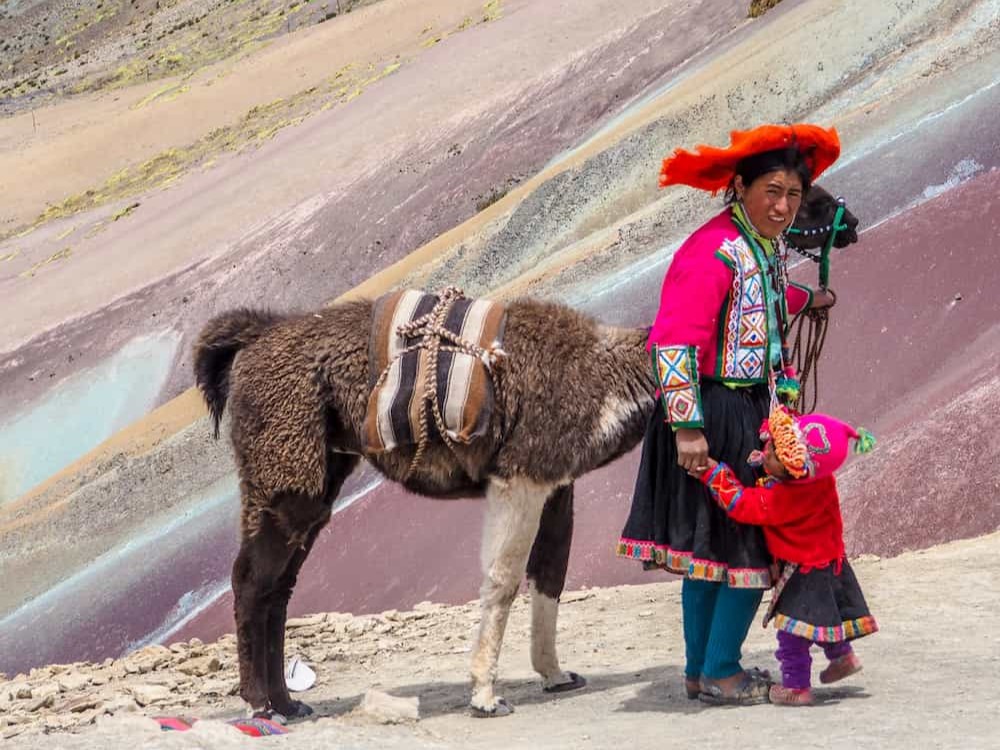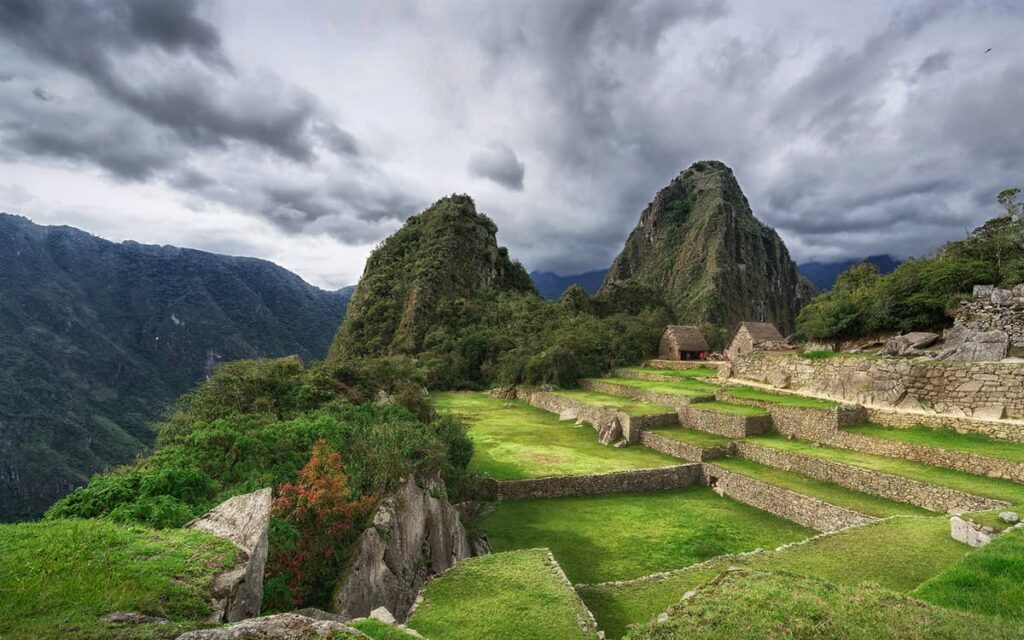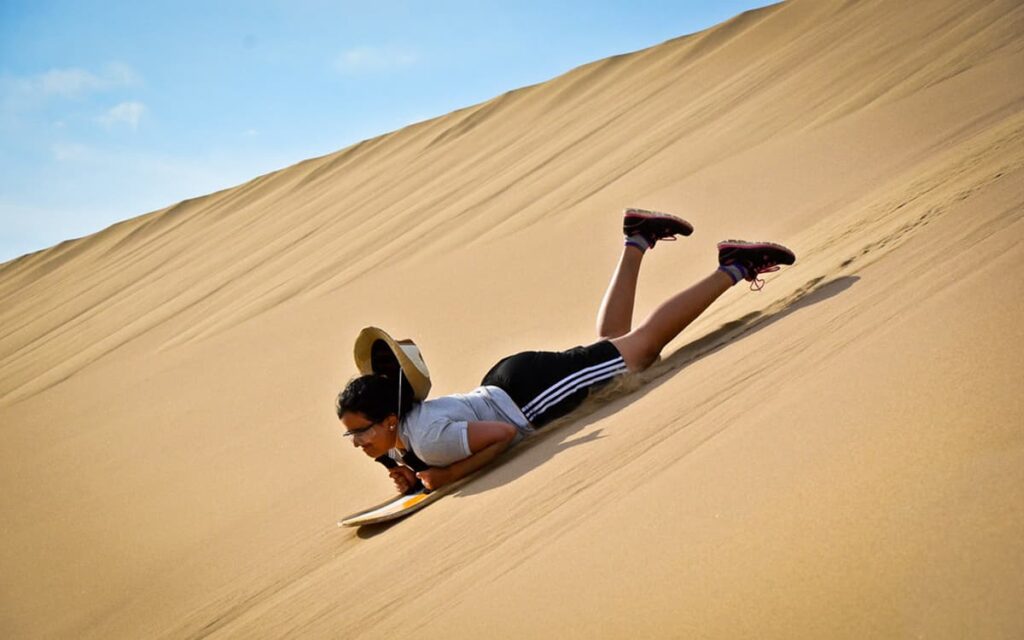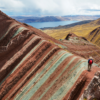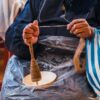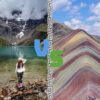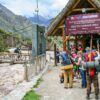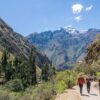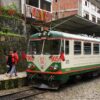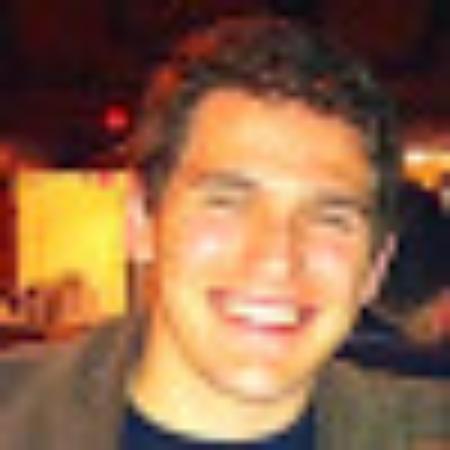This archaeological complex is located in the district of San Pedro de Cacha, province of Canchis, department of Cusco at 3460 meters above sea level on the slopes of the Quimsachata volcano. Archaeologists have divided it into 5 main sectors: Temple of Wiracocha, Plazas, Colcas, Mesapata and Sector E, in addition to an artificial water reservoir in front of the Temple and a wall that surrounds the entire complex.
Some imposing remains of this famous construction allow to appreciate a stone and earth wall 13 meters high, a polished stone column 5 meters high, rooms and footprints of streets and squares.
Raqchi in Perú is the largest pre-Hispanic sanctuary. The statue of Viracocha, which was worshiped in the center of this sanctuary, corresponded, as described by the Inca chronicler Garcilaso de la Vega, to that of a tall, white man, dressed in a tunic of the same color and showing a long beard. . Several scholars estimate that the Incas mistook the Spanish conquerors for the sons of Viracocha, due to the resemblance they had with the god they worshiped. This would have been one of the reasons why they did not oppose fierce resistance to the Spaniards, whom they called «viracochas», as the natives do until now when referring to the whites, whom they also call «mistis.»
Raqchi geographical location
The Raqchi Ruins is located in the town of San Pedro de Cacha (Sicuani, which is located between the route to Puno). This complex is one of the most beautiful and exciting made by the Incas. Apparently it was a sanctuary built by Pachacutec to the god Wiracocha, after having defeated the Chancas.
Raqchi temple of Wiracocha
This large building, 90 meters long and 20 meters wide, has solid carved stone foundations and adobe walls. It has two double jamb doors, each of which has safety boxes to close them.
Function:
Religious
The Raqchi Ruins has a sanctuary to worship the god Wiracocha, who was considered the supreme creator of everything. In the sanctuary there was a finely carved stone statue, which according to some was the figure of the god Wiracocha
Administrative:
The park is strategically located on the border of two large areas, the Quechua and the Aymara. This site was storage of food from various places, there were also textile and ceramic workshops. Raqchi was the supply center for the entire Collao and Cusco area
Military:
The existence of the extensive wall and the house of the chasquis suggests that Raqchi was used as a place for military training as well as a center for the Inca mail.
Attractions:
The largest Inca Temple
The temple is a unique construction within Inca architecture. It is a large rectangular warehouse 92 meters long by 25 meters wide, with a huge central wall almost twelve meters high. The base of the wall, up to three meters high, is made of finely carved stone, then it is made of adobe. The temple had communication doors with discharge bays above them and supported a gabled roof, which was also supported by the eleven cylindrical columns on each side, as well as the side walls of the building. Only one of the total of twenty-two columns is preserved today. The foundations of the lateral walls have remained, now visible after the excavation work of the Spanish Mission in the late 1970s.
The central wall
This 12 meter high wall divides the central space of the building. This wall that stands out from any angle is built of finely carved stone up to 3 meters high, hence the continuous building with pure adobe. This wall has 70 niches 70 cm high that cross the wall. It also offers 10 interior corridors, above the doors we find 2 windows, one larger and the last one almost at the end of the small wall.
Cylindrical columns
On both sides of the wall, 11 on each side, we find the foundations of 22 columns made of stone and adobe that served to support the thatched roof. These remains of the columns attract a lot of visitors’ attention, because there is no other place where the Incas used cylindrical columns. These peculiarities make this building one of the most important of the Inca culture.
Enclosures
These buildings were built in a rectangular area and are perfectly aligned forming 3 parallel alleys. Like the main building, they have a high central wall and two rooms with niches on each side. These niches were used to put decorative objects such as golden idols and other offerings that were used to worship their gods.
Next to these buildings we find a large area for housing (about 36). Also several hundred circular stone deposits (colcas).
Qolqas
So far 156 of these circular constructions with a diameter of 8 mt each have been found.
These colcas were used as food warehouses, storing agricultural products for times of disasters, wars or drought, etc.
Raqchi is believed to have been a storage center for reserves. The Incas chose this site for their colcas because of its favorable microclimate and strategic location (it is located on the border of the Quechua and Aymara region).
Researchers claim that there is no other place with as many colcas as in Raqchi. Because of the tie and union with which they are made, it can be said that they are anti-seismic; each of which has two windows for oxygenation and a narrow door. Built with volcanic stone and abundant mud, they have an admirable beauty.
The Inca Bath and Usno
Translated these words correspond to «where the monkey stands.» It is a succession of seats, carved out of diorite rock with a deep aesthetic sense, it is on the eastern portion of the hill.
Inca trail
It is the main road on the southern side of the Tahuantinsuyo empire, which linked Collao with Cusco. This long road of thousands of kilometers covered mountains, plains and valleys. It was used to transport food and messages. Its cobblestones are still intact at the Raqchi site, each of its stones and stairs are firmly in place.
Raqchi Community
It is a small town of 80 households. It is located in the district of San Pedro, province of Canchis, department of Cusco. On the right bank of Vilcanota, 118 km. south east of Cusco, at an altitude of 3 480 meters above sea level.
Most of its land is covered with volcanic lava turned into rock, the rest of the land is destined for agricultural activity.
Pottery in Raqchi
Most of the settlers are dedicated to pottery, making ceramics of different models and sizes, which are called Raqchi, from which the name Raqchi comes. This activity has remained as an inheritance from their ancestors from the time of the Incas.
Raqchi ceramics, due to their high quality, have reached places such as: Lima (capital of Peru) Tucumán (Argentina), Bolivia. It is not difficult to recognize the Raqchi ceramics, as they all contain volcanic lava particles.
Raqchi church
This church corresponds to the time of the republic, as it was built in the second decade of the 20th century by the community builders. For the construction of the towers, pumice stones were used, coupled with mortar, as the Incas did in some constructions.
The inhabitants of the area point out that at that time there were no trees in the area and to build they brought the wood from distant places in beasts of burden (donkeys, mules)
How is the weather in Raqchi?
The climate in Raqchi in Perú
is temperate and dry. There are 2 seasons during the year.
The dry season runs from April to October and is characterized by sunny days (21ºC.) And cold nights (0ºC.). The rainy season occurs from November to March. During those months, the rains occur more frequently.
How to get to Raqchi Ruins?
Raqchi is located almost 119 kilometers from the city of Cusco. To get there, you must take the highway to the south that connects Cusco with Puno. The journey by car takes approximately 1 hour and 40 minutes.
How to visit Raqchi in Perú with tour?
There are not many tours that offer a visit to the archaeological site of Raqchi. The few tours that are offered include other tourist sites in the South Valley Cusco. Reservations can be made online or in the Historic Center of Cusco:
1 day tour to Raqchi –The full day tour to Raqchi is the most common way to visit the Huiracocha Temple. They generally include transportation (round trip), lunch, tour guide and entrance to this and other tourist sites (Piquillacta, Andahuaylillas).
Tour through the Cusco – Puno route – This 1-day private bus service takes tourists to some tourist attractions in the South Valley. In addition to Raqchi, you can visit the Colonial Temple of Andahuaylillas and the Museum of Pukara, in the Puno region.
Experiential tourism in Raqchi – Another way to visit Raqchi is through the experiential tourism tour of 2 days and 1 night. This service includes transportation, food, accommodation in a native family and entry to the archaeological site of Raqchi.
How to visit Raqchi with the Cusco Tourist Ticket?
The Cusco General Tourist Ticket includes the entrance to Raqchi. This set of tickets was designed for the tourist to access at the lowest cost to all the attractions of Cusco and its surroundings such as Sacsayhuaman, Coricancha, Pisac, Ollantaytambo, among others.
To acquire the Cusco Tourist Ticket, it must be purchased in person at the authorized offices. The ticket only includes the entrance to the tourist attractions. Transportation, guide service or any type of food is not included.
How much?
The General Cusco Tourist Ticket has a cost of 130 soles (40 U $ D) per person. University students pay 70 soles (21 U $ D). The ticket includes Raqchi and many other attractions of Cusco.
If you visit the city of Cusco another impressive destinations that you can visit are the tour to rainbow mountain peru or the humantay lake tour from cusco, which only takes one day. But if you are gonna to stay more days in Cusco, other archaeological places you can know will be the choquequirao trek peru, the salkantay trek to machu picchu, and the classic inca trail 4 days 3 nights.

